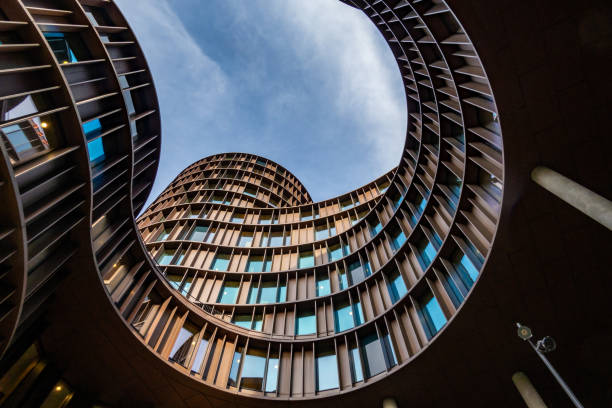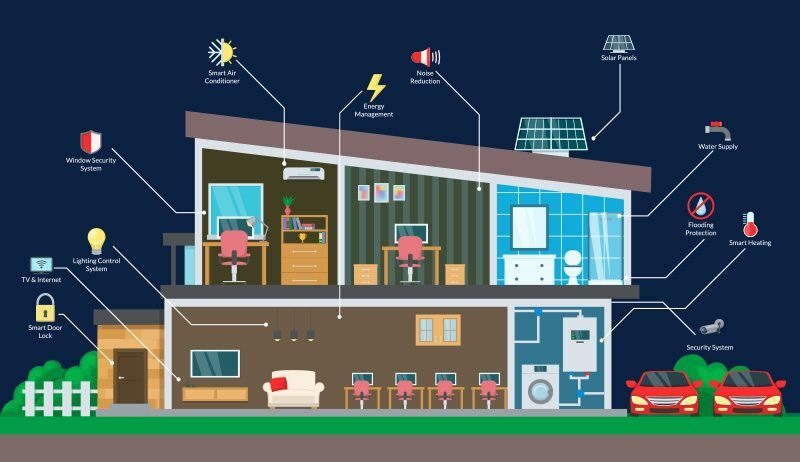Sunday, 21/12/2025 | 12:25 GMT+7
Denmark has made significant strides in optimising energy efficiency in buildings over the past few decades reducing energy consumption and lowering carbon emissions. But work is still to be done, and new ambitious goals have been set to further improve and secure sustainability in the Danish build environment.

Explore six key areas that demonstrate why Denmark is well-positioned to continue to succeed in optimising energy efficiency in its buildings.
The Danish Building Code, BR18, drives innovation by regulating energy performance in major building renovations. It sets minimum standards for components like windows, ventilation systems, and roofs, ensuring continuous energy efficiency improvements in existing buildings. Owners are encouraged to save energy during renovations, and the code is regularly updated to incorporate technological advancements through industry consultation.
Energy Performance Certificates (EPCs) assign buildings in Denmark an energy rating and provide cost-effective recommendations for improving efficiency and savings. Half of Denmark’s building stock has an EPC. The layout of the Energy Labelling Report was redesigned in 2021 for easier comprehension, while a new funding requirement for EPCs has significantly increased the annual number of energy labels issued. The Danish Energy Agency (DEA) is responsible for implementing and overseeing the EPC scheme, with all certificates registered in a central database accessible to the public.

Smart energy renovation considers the transformation of energy systems around buildings to unlock their full potential. By adopting an integrated Smart Energy System approach, synergies between savings, energy efficiencies, and interconnections across sectors can be leveraged, utilising existing infrastructure and storage. Integrating heating, cooling, electricity, transport, and gas savings improve overall energy efficiency, allowing for the utilisation of waste heat and expanding district heating. Sector integration enables cost-effective thermal storage options and facilitates the integration of renewable energy sources like wind and solar power.
To empower citizens with energy efficiency information, targeted messaging is crucial, especially when building owners are seeking information during house transactions or major refurbishments. Recognising that individuals have diverse motivations for reducing energy consumption, such as monthly savings, improved comfort, or environmental concerns, allows for more precise and impactful campaigns on the platform, catering to specific needs and goals.
Denmark’s municipalities are working together for energy savings in order to reach the targets under the Paris Agreement. Through the DK2020, tailored climate action plans address barriers, prioritise energy efficiency
in municipal buildings, and encourage homeowners to follow. Smart climate strategies, optimised building activity, and data-driven energy management are all employed, while municipalities share knowledge to inform legislation, suppliers, and product development, facilitating effective local solutions.
A holistic approach is crucial for sustainable energy renovation, considering both environmental, economic, and social factors. The DGNB certification standard provides a benchmark for evaluating sustainability in buildings and urban areas, encompassing technical, process, and area quality criteria. With different phases and specific criteria for various building types, DGNB certification is applicable to new and existing buildings, renovations, and buildings in use, covering the entire life cycle.
According to Stateofgreen.com








 Webinar 2: “Financial Support for Energy Efficiency Enterprises – Opportunities and Challenges”
Webinar 2: “Financial Support for Energy Efficiency Enterprises – Opportunities and Challenges”
 Vietnamese enterprises achieve green growth and cut costs through energy efficiency
Vietnamese enterprises achieve green growth and cut costs through energy efficiency
 Capacity Building for Program Implementing Entity
Capacity Building for Program Implementing Entity
 Enhance Energy Efficiency Knowledge for Managers of Cement Industrial Enterprises
Enhance Energy Efficiency Knowledge for Managers of Cement Industrial Enterprises
 Promoting Energy Efficiency for Technical Staff of Brick and Ceramic Sector
Promoting Energy Efficiency for Technical Staff of Brick and Ceramic Sector
 Capacity building for participating financial institutions of the VSUEE Project
Capacity building for participating financial institutions of the VSUEE Project
 Capacity building for participating financial institutions in Ho Chi Minh City
Capacity building for participating financial institutions in Ho Chi Minh City